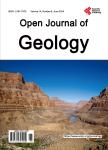Contribution to the Petrographic and Geochemical Study of the Karthala Massif Lavas in the Bangaani Area, Grande Comore, Indian Ocean
Contribution to the Petrographic and Geochemical Study of the Karthala Massif Lavas in the Bangaani Area, Grande Comore, Indian Ocean作者机构:Department of Geology Faculty of Sciences and Technics Cheikh Anta Diop University of Dakar (UCAD) Dakar Senegal
出 版 物:《Open Journal of Geology》 (地质学期刊(英文))
年 卷 期:2023年第13卷第5期
页 面:312-336页
学科分类:0709[理学-地质学] 070901[理学-矿物学、岩石学、矿床学] 07[理学]
主 题:Bangaani Karthala Comore Alkaline Basalts OIB
摘 要:The Bangaani area is located in the northwestern part of the Karthala Massif on the island of Grande Comore, about 10 km from the capital Moroni. It is essentially constituted of basalt plateaus outcropping in the form of pahoehoe and aa lava flows or in the form of massive vesicular or non vesicular basalt flows. Petrographic analysis of the massive basalts studied shows a porphyritic microlitic texture marked by the successive crystallization of olivines, opaque minerals, clinopyroxenes and plagioclases in a relatively abundant mesostasis. This crystallization sequence is typical of a high pressure environment corresponding to primary alkaline magmas. The geochemical study of major and trace elements shows that the basalts studied are under saturated in silica (47.24%) but rich in alkali (2.26%) and titanium (2.66%). They correspond to intraplate alkaline basalts of type oceanic island basalts (OIB) and present a primary character marked by relatively high contents of magnesium (6.69%), chromium (151.23 ppm), nickel (107.53 ppm) and scandium (27.15 ppm). The REE and multi-element diagrams confirm that the Karthala basalts are alkaline basalts of type OIB by their enrichment in LILE and their depleted character in HREE and HFSE. In terms of isotopic ratios, they are comparable to HIMU and EM I.



